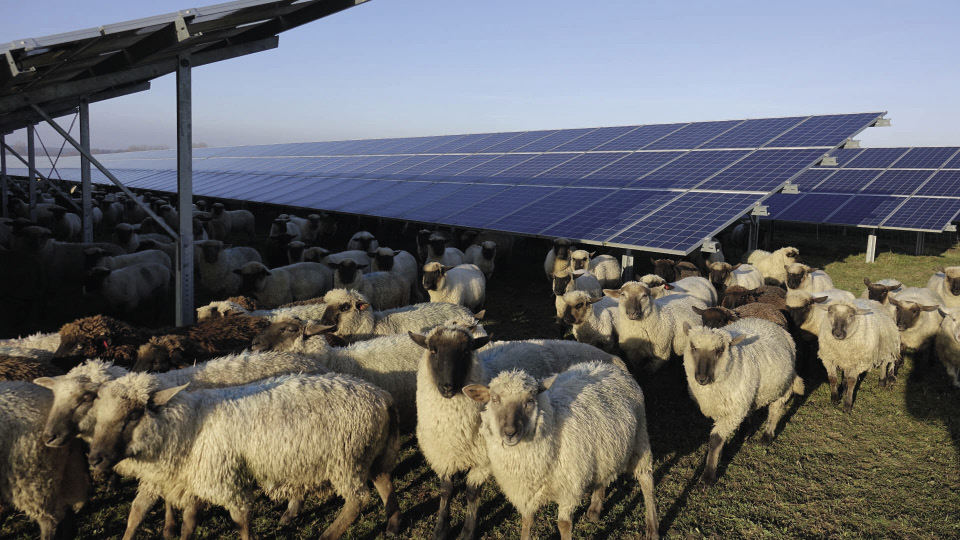BayWa r.e.’s subsidy-free Don Rodrigo solar plant was a remarkable achievement. The project site, located on the southern tip of Spain, is also blessed with some of the best irradiation conditions for solar power generation in Europe. So when the company announced that it would do it again – this time in northern Germany with an 8.8 MW solar array on the coast of the Baltic Sea – it became evident that it isn’t just about irradiation intensity, or economies of scale, but adding more strings to the bow.
Albert Schlaak, project manager at BayWa r.e. Solar Projects GmbH, led the development for the fifth phase of the solar array in Barth, Germany, on the premises of the Stralsund-Barth regional airport. “We already had excellent relationships with the municipality and the airport operator, which made the development process much easier for us,” Schlaak says, adding that the breeze from the Baltic Sea has a positive cooling effect – potentially offsetting the slightly lower irradiation at the site, compared to locations in southern Germany. But the right ingredients for a successfully delivered subsidy-free project and PPA differ.
The project at the Barth airport now includes six individual arrays. Schlaak explains that by working at the site with the same stakeholders since 2012, BayWa r.e. was able to streamline its processes in project development to drive down costs. Above all else, the grid access point – which tends to account for a sizable share of project costs – was simplified.
“Of course, the grid access point was a little further away, but when we built Barth III, we already had Barth IV, V, VI in the pipeline, and built the grid access accordingly,” Schlaak explains. “We didn’t have to open everything up from scratch, but figuratively speaking just had to flip a switch, and we had a grid connection.”
Long-term planning and streamlined processes on which to rely on are what is giving BayWa r.e. the support it needs to further drive down costs. The company’s business model is based on developing and building solar arrays and selling them to new owners shortly after completion. In many cases, BayWa r.e. will continue its involvement in the project as an O&M contractor.
This is where BayWa r.e. needs to trust its carefully selected suppliers of equipment. Schlaak notes that for the company to be successful in its model, it is imperative to build long-lasting, highly dependable, robust solar PV plants. If the company retains the O&M contract, each failure and downtime event ends in a company loss. “That means that we are only selecting top products with supreme longevity and very low failure rates,” says Schlaak. “And this also, of course, includes Huawei’s inverters.” For Barth, the company installed 43 units of Huawei’s SUN2000 60-100KTL inverters.
BayWa r.e. has been working with the world’s largest inverter manufacturer for many years. It also equipped its Don Rodrigo power plant in Seville with Huawei inverters for the same reason. It is not just that Huawei’s inverters offer high dependability; BayWa r.e. also chooses the company’s solutions because they make its PV plants more reliable.
“Power line communication is one good example of these features. It makes additional cabling obsolete, which reduces the probability of cable failure, which in turn means we don’t have to dig up cables if there is a problem,” Schlaak explains. Without that feature, an additional communication cable between the inverter substation and switchgear would need to be laid. This adds to capex, because they have to dig in, but it can also be a source failure, as the communication lines are typically more fragile than the power lines from the inverter to the substation.
BayWa r.e. has optimized its solar PV plant designs for many years, supported by a custom-created master layout design that has been certified by German technology certification organization VDE. The plants are designed to exceed 20 to 30 years of operation without major issues, as problems would hurt the sensitive economics of the solar PPA.
The German PPA market is still in its nascent stages, Schlaak reports, with banks, investors, and potential corporate off-takers still in the learning and trust-building phases of purely renewable deals. The agreement for the Bath V project was closed with the company’s in-house electricity trader, Clean Energy Sourcing GmbH (CLENS), and lasts only five years. “That is the time frame over which we could fix the prices. At the time, the market for renewable PPAs in Germany was not very mature,” Schlaak explains. The Umweltbank, a German bank with green credentials, was the lender. Schlaak says that the bank is currently pioneering Germany’s PPA market.
For the Don Rodrigo site in Spain, BayWa r.e. locked in a PPA for 15 years with Statkraft. Since then, Spain’s subsidy-free solar PPA market has experienced an enormous uptick, with several gigawatts currently being developed, and not just by BayWa r.e.
In Germany as well, the PPA market could grow and be a welcome alternative to the FIT tariff system. Had it not been for the Barth PPA, BayWa r.e. would have had to wait for two years to sign up for another auction for the project cluster. As the company wanted to move ahead without this requirement, it found a solution with investors and stakeholders. The accomplishment was a trailblazing one, with new announcements of additional German PPA projects now making headlines. And at BayWa r.e. headquarters, the minds behind Barth V are now working on new projects, which the company says we will hear of soon.
This content is protected by copyright and may not be reused. If you want to cooperate with us and would like to reuse some of our content, please contact: editors@pv-magazine.com.
